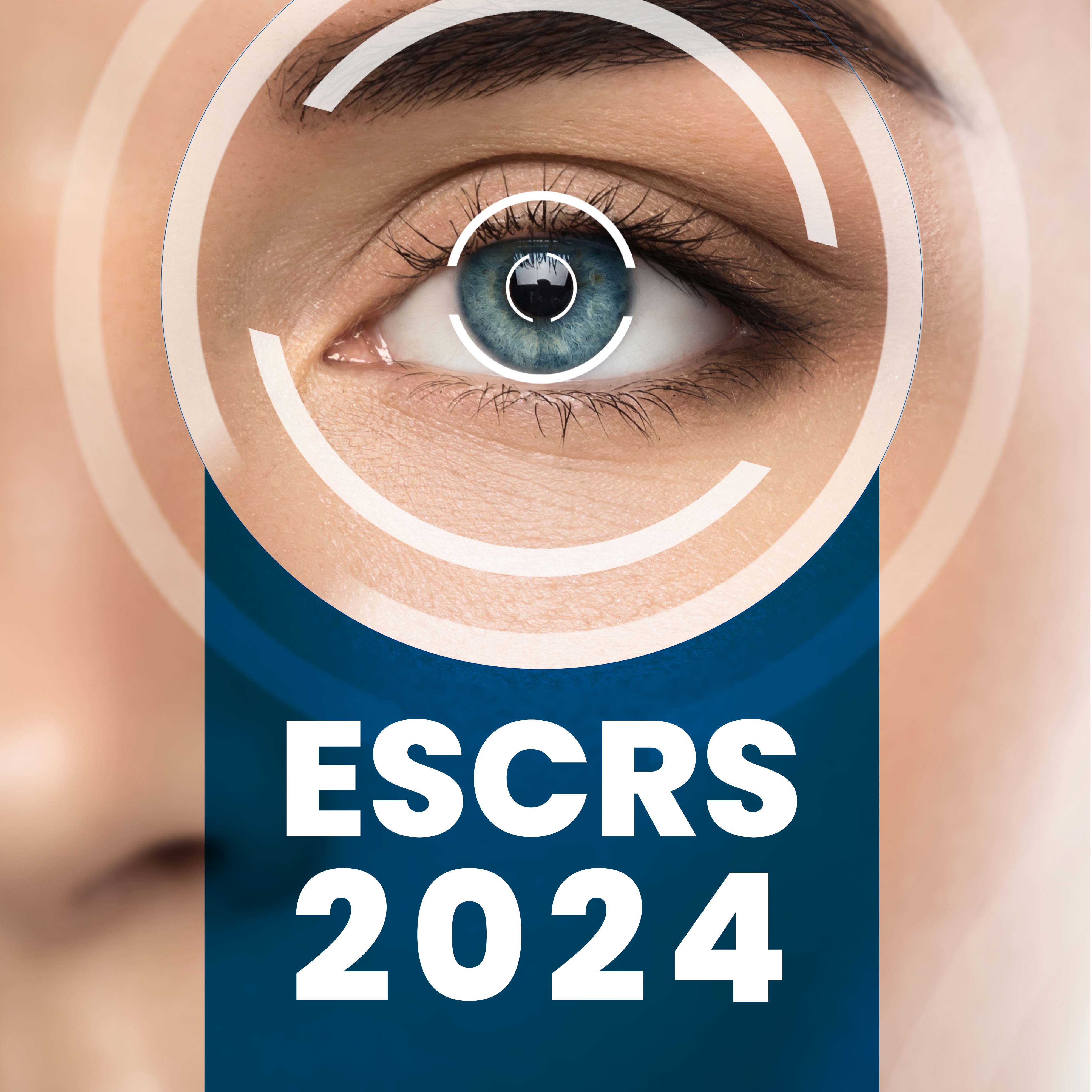Speaker: Pr. Marc Labetoulle
Preoperative screening for dry eye disease is crucial for cataract surgery candidates due to its significant impact on surgical outcomes and patient comfort. Dry eye disease is prevalent among these patients, affecting visual quality and altering the accuracy of refraction assessments and intraocular lens (IOL) calculations. This condition can lead to suboptimal postoperative results and persistent keratopathy, which not only causes discomfort but can also hinder recovery. Additionally, dry eye disease often worsens after cataract surgery, further complicating patient management.
Globally, dry eye disease affects approximately 34% of adults, with clinical studies revealing that up to 50% of individuals with Meibomian gland dysfunction (MGD) are asymptomatic within the Caucasian population. Among cataract surgery candidates, 22% present with clinically evident dry eye disease, but this number increases to 63% when symptoms are included. Furthermore, around 52% of these candidates exhibit MGD, and approximately 60% show atrophy of the Meibomian glands. Corneal staining, indicative of dry eye disease, is observed in up to 80% of cataract surgery candidates. Postoperative dry eye disease can significantly impact surgical outcomes. Research by Kasetsuwan et al. demonstrated that tear breakup time decreases by 60% and keratopathy increases by 60% following cataract surgery. The presence of dry eye can also affect IOL planning; dryness leads to variability in keratometry measurements and corneal astigmatism, which in turn affects the accuracy of IOL power calculations. Dry eye can cause up to 20 degrees of variability in the axis of astigmatism, resulting in a loss of 3% of the toric IOL’s power per degree of misalignment, impacting the effectiveness of astigmatic correction.
To manage ocular surface health effectively, it is essential to perform a thorough preoperative assessment to identify and address any ocular surface abnormalities. Techniques such as evaluating tear breakup time, corneal staining, and Meibomian gland function are crucial. Ongoing management of ocular surface issues during and after surgery is also vital to improve postoperative outcomes and patient satisfaction. Addressing dry eye disease comprehensively ensures better surgical results and enhances overall patient care. Proper assessment of dry eye disease before cataract surgery is crucial for optimizing surgical outcomes. Initial evaluation should focus on patient discomfort, tear quality and quantity, and the condition of the ocular surface, including the cornea and conjunctiva, as well as the eyelids. Start with a brief inquiry about symptoms such as dryness, burning, or a sensation of inadequate tears. This can be quickly assessed by applying a drop of fluorescein to check for peripheral superficial keratitis and measuring the tear breakup time (TBUT). Additionally, observe the tear meniscus height (TMH) and inspect the eyelid border for signs of allergy, such as sneezing or seasonal symptoms, which can be done in under a minute.
For a more detailed evaluation, use a visual analogue scale (0 to 10) to assess the level of discomfort experienced by the patient. The Oxford scale can be used to quickly gauge corneal staining. A more precise measurement of TBUT can be taken using a slit lamp, and examining TMH with the same tool can further elucidate dry eye severity. Conducting a Meibomian gland expression test, which takes about five minutes, can provide additional insights. It is also important to look for corneal scars or previous herpetic disease that may contribute to dry eye. In more complex cases, advanced diagnostics are necessary. Examine for conjunctival hyperemia and mucous accumulation in the tear meniscus to indicate aqueous deficiency. Fluorescein staining can reveal typical dry eye signs, such as conjunctival folds or filaments. Observing the conjunctiva for clarity and checking for the presence of conjunctival hyperemia, mucous accumulation or filamentary keratitis can provide a comprehensive view of the ocular surface condition.
Assessing the severity of dry eye disease is crucial for effective management, particularly when planning cataract surgery. Key indicators include the presence of conjunctival staining, which can reveal fluorescence points, coalescent staining, and filament formation after fluorescein application. Conjunctival abnormalities and membrane gland dysfunction are often evident, with staining typically observed in the inferior cornea and the presence of neovascularization, especially at the limbus. In severe cases, you may notice filaments and extensive nerve vessel growth. Examining the eyelids is also important. Look for signs of telangiectasia, Meibomian gland dropout, and any abnormalities in the eyelid margins. A brief evaluation of the eyelids can reveal signs of allergy, such as pigmentation of the inferior eyelid, the Danny Morgan sign, and changes in eyelash density. Superior limbal keratitis should be considered in patients with chronic dry eye symptoms, with staining in the upper conjunctiva indicating potential issues.
For more comprehensive cases, specialized questionnaires and ocular surface scales may be required, which can extend the assessment time beyond five minutes. However, in most cases, a quick five-minute evaluation is sufficient. If symptoms and signs are congruent, you can typically proceed with treatment. In cases where there is a discrepancy or the dry eye disease is severe, further testing may be needed. Patients with severe dry eye or uncontrolled disease might necessitate postponing cataract surgery until the ocular surface improves. Special attention should be given to those with conditions like Sjögren’s syndrome or a history of corneal surgery, as they are at higher risk for complications. Screening for DED should be stratified based on risk: a minimal examination (1 minute) is appropriate for individuals at low risk, while a complete (5 minutes) or comprehensive (>5 minutes) examination is recommended for those with a higher risk. Specifically, comprehensive examinations are necessary for patients with uncontrolled or severe DED, including those with Sjögren’s syndrome, rheumatoid arthritis, systemic lupus erythematosus, a history of refractive surgery, antidepressant use, allergies, glaucoma, or treated viral infections (herpes simplex virus, varicella-zoster virus, adenovirus), as well as individuals undergoing menopause or hormone therapy. Regarding treatment protocols following assessment, if no DED is detected, no treatment is required. For mild DED, if treatment is already in place, it should be continued; otherwise, initiate DED treatment. In cases of moderate DED, optimize treatment and, if necessary, consider surgical intervention after 1-2 months of treatment. For severe DED, optimize treatment extensively, await 3-4 months for potential improvement, and proceed with surgery only when the ocular surface is deemed suitable. Surgery should be deferred in cases of severe and uncontrolled DED, particularly if filamentary keratitis, multiple active Salzmann's nodules, cicatrizing conjunctivitis, or atopic keratoconjunctivitis are present. Extra caution is required for patients with atypical medical histories (e.g., Sjögren’s syndrome, rheumatoid arthritis, systemic lupus erythematosus), especially if they exhibit positive anti-neutrophil cytoplasmic antibodies or cryoglobulins in serum. NSAID use should be approached with care in these patients to avoid exacerbating DED symptoms.
A practical example includes a 62-year-old patient with Sjögren’s syndrome who experienced reduced visual acuity. Treatment with cyclosporine and punctal plugs was employed to manage dry eye before proceeding with cataract surgery, which resulted in a successful postoperative outcome. In conclusion, while delays in surgery due to dry eye are rare, they are sometimes necessary to ensure optimal outcomes. The focus should be on distinguishing between urgency and a well-considered approach, avoiding the use of harmful substances, and optimizing treatment before surgery.
42nd Congress of the European Society of Cataract and Refractive Surgeons, 6 – 10 September 2024, Fira de Barcelona, Spain.


